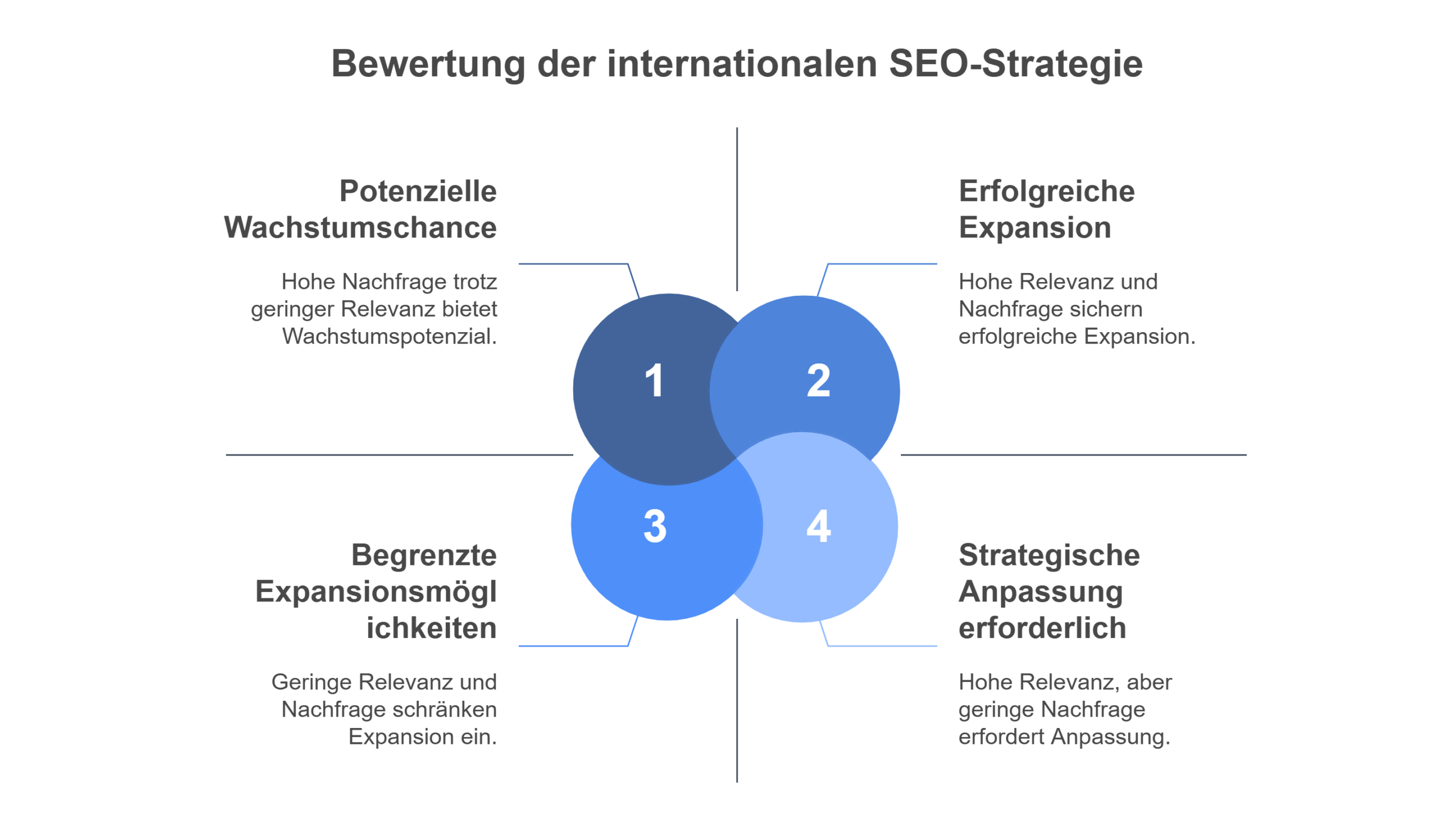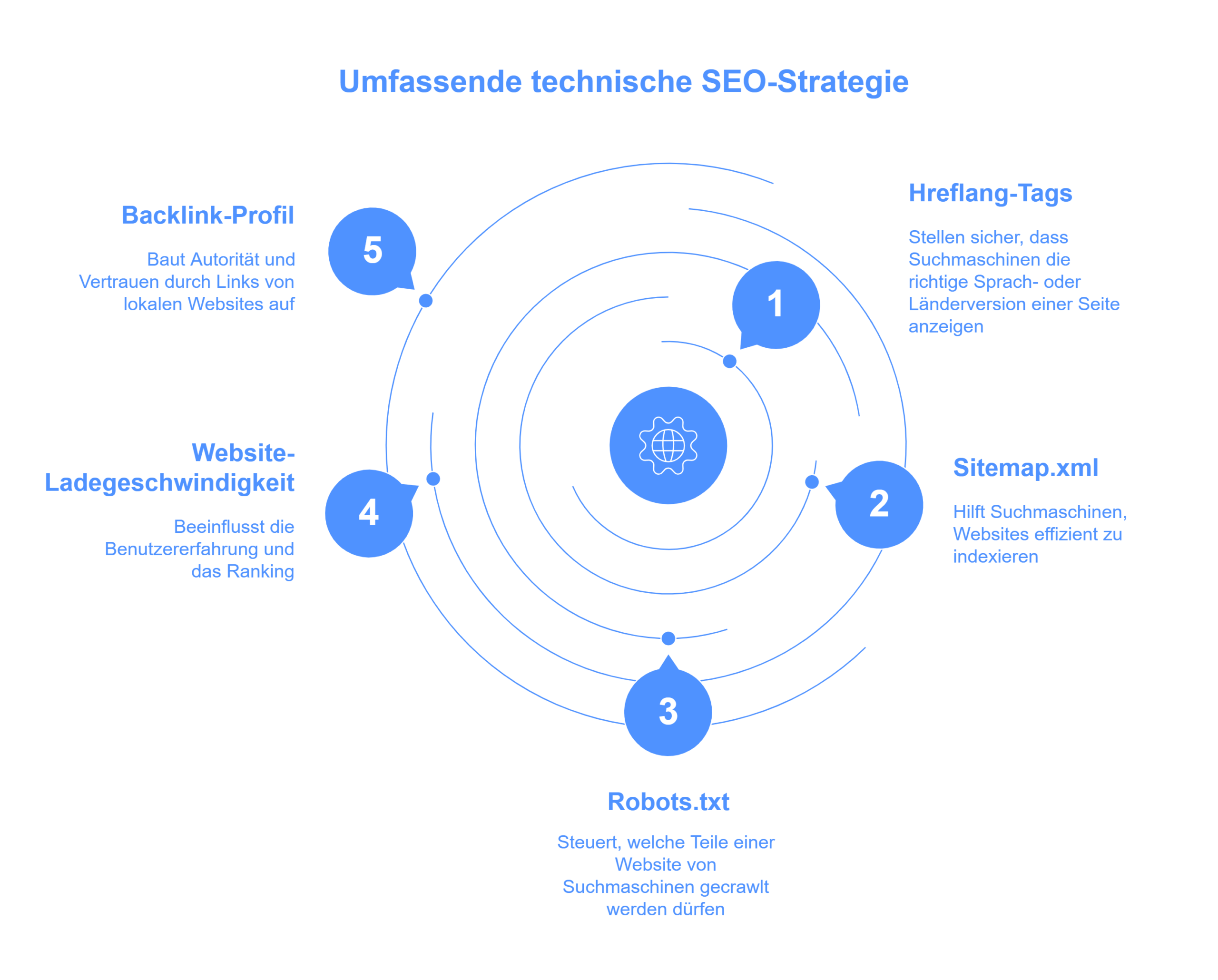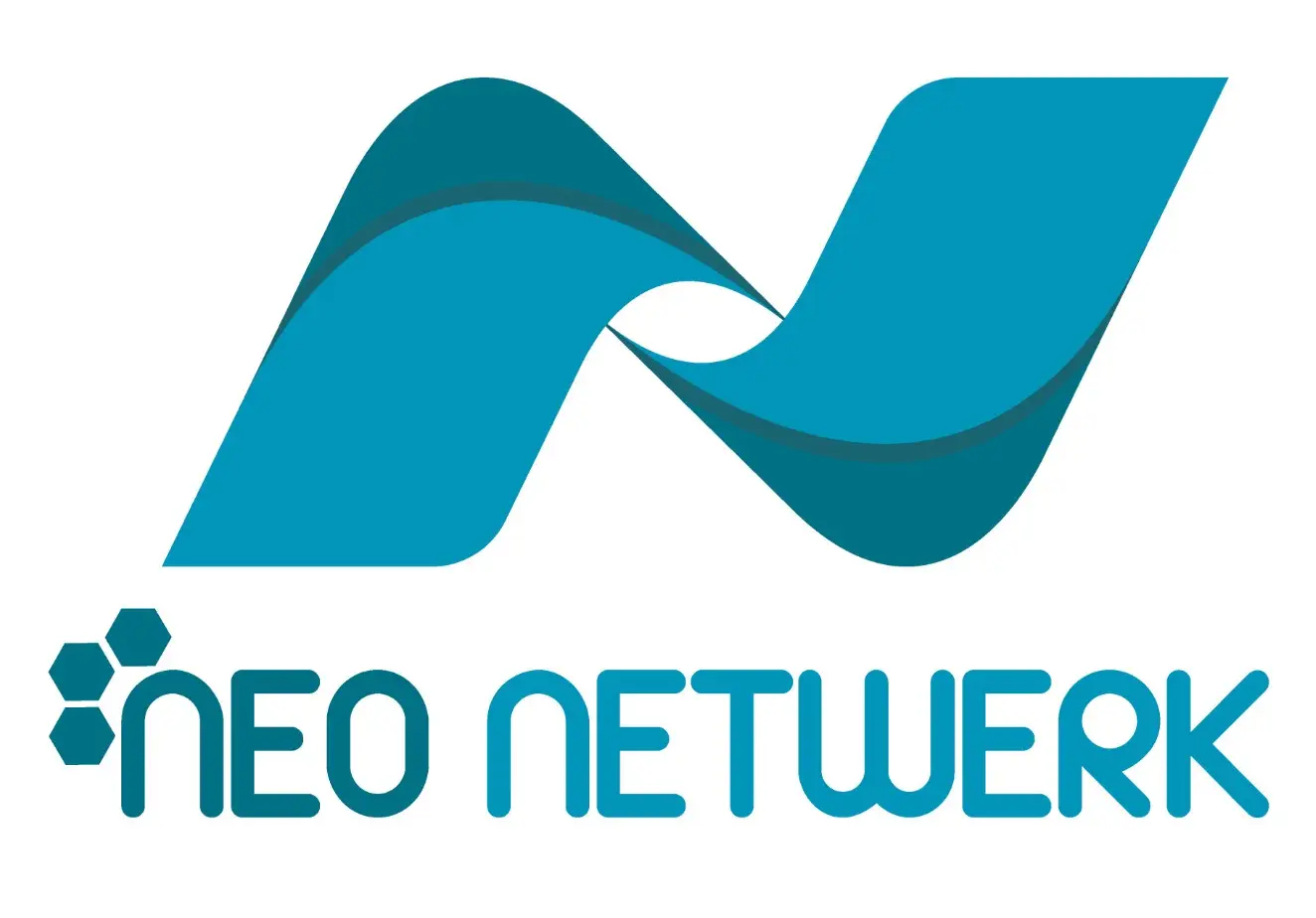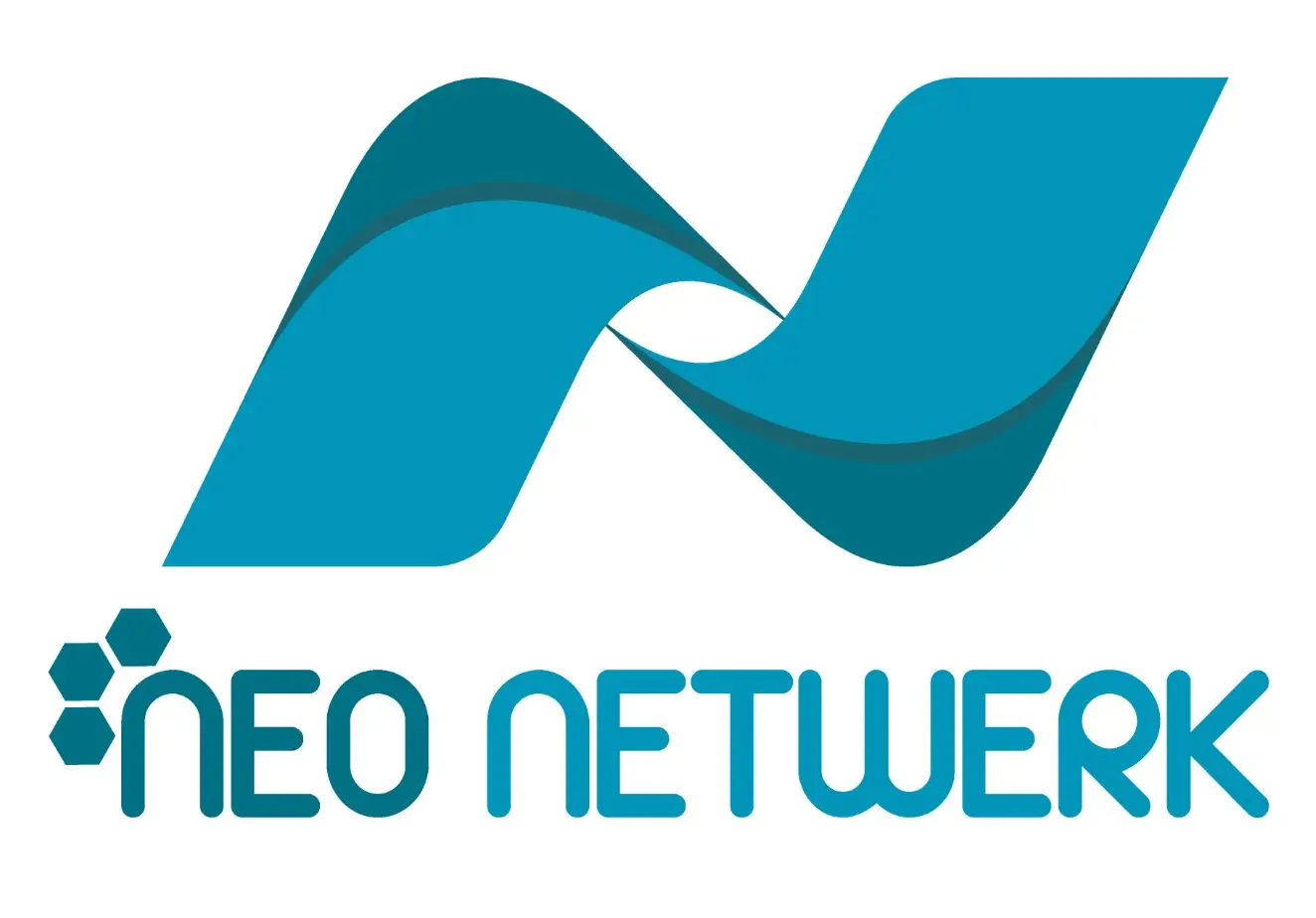If you want to expand your company’s reach beyond your national borders, international SEO is a smart move. With an internationally focused SEO strategy, you tailor your efforts to the different search habits across various countries.
Sounds challenging? Not if you have the right information and partners by your side. In this article, we’ll explain what matters in international SEO and how you can apply it successfully.
What is International SEO?
International SEO refers to optimizing websites for different countries. The goal is to improve visibility in the search results of the target markets and to effectively reach potential customers there.
International SEO involves both technical and content-related aspects, tailored to the specific needs and search behaviors of different target groups. If you want to reach audiences in other markets, feel free to speak with our team.
When Does an International SEO Strategy Make Sense?

An international SEO strategy makes sense when your business targets an international audience and you aim to expand into new countries.
It is especially relevant if your company is already established in one market and wants to tap into others. Even if you already operate locations in these countries, an internationally focused SEO strategy can be beneficial.
Key factors that support an international SEO strategy:
- Your product or service is relevant in multiple countries.
- There is proven demand in other markets (e.g., through market analysis).
- Your company can meet the logistical and legal requirements of international trade.
- Competitor analysis shows potential to establish your business in new markets.
To ensure the success of your internationalization strategy, detailed market analysis is essential. It helps identify potential hurdles, address the right target audience, and gain a deep understanding of the competitive landscape.
Advantages and Disadvantages of International SEO

One major advantage of international SEO is the expansion of your target audience, as it gives you access to new markets and potential customers around the world. Optimizing your website for different languages and cultures can also boost brand awareness. This can help your business position itself more quickly as a leading provider in less competitive markets and gain a competitive edge.
In the long run, international SEO is a cost-effective strategy. It allows for sustainable, organic visibility that doesn’t rely on ongoing investment in paid advertising.
However, these benefits come with challenges. Cultural differences must be considered since marketing strategies cannot simply be transferred from one country to another. It is also crucial to identify the dominant search engine in each target market – Google is not the leader everywhere.
Language barriers are another hurdle: your content must be not only accurately translated but also adapted to the cultural specifics of each country. Additionally, legal requirements differ significantly from country to country – especially regarding data protection, legal notices, and tax regulations – and require thorough legal review.
Challenges of International SEO
Internationalizing your website brings various challenges that should not be underestimated. Cultural differences are a key factor.
They can cause marketing strategies that work well in one country to fail completely in another. Adapting content to local conditions is therefore essential to win the trust and interest of your audience.
Another challenge is that Google is not the dominant search engine in every country. While Google leads in many Western countries, other markets have their own search engines with different algorithms and ranking factors. Therefore, it’s crucial to adapt your SEO strategy to the respective search engine.

Language barriers also play a significant role. Simple translations often aren’t enough, as specific terms, idioms, or even product names are used differently in other languages. It’s important that content is not only linguistically correct but also culturally adapted. Localization or even transcreation can be very helpful here.
Lastly, legal requirements pose a major obstacle. Each country has its own requirements for data protection, legal notice obligations, and tax regulations, which must be strictly followed. Data protection laws like the GDPR in Europe or specific regulations in the U.S. or China can significantly impact website design and operation.
The Main Challenges of International SEO:
- Cultural differences: Marketing strategies must be adapted to local realities.
- Different search engines: Google is not the market leader everywhere – Baidu dominates in China, Yandex in Russia.
- Language barriers: Translations must be both accurate and culturally appropriate.
- Legal requirements: Data protection laws, legal notice obligations, and tax regulations vary by country and require thorough review.
If you have questions, feel free to contact us. We’ll support you in aligning your international SEO strategy for optimal results.
Do You Know the Local SEO Market?
An often underestimated but crucial factor for successful international SEO is local user behavior. Each region has its own preferences, habits, and expectations for digital content. While some countries favor in-depth blog articles, others prioritize visual content or interactive features.
For example, in Japan, detailed product descriptions and numerous customer reviews are essential, while Scandinavian countries place greater importance on minimalist design and intuitive navigation.

Another central aspect is the purchasing behavior of your audience. In the U.S., credit card payments are the norm, while in Germany and the Netherlands, invoice payments or direct bank transfers (e.g., Giropay or iDEAL) are preferred. These differences should also be reflected in the checkout process of an internationally optimized website to avoid conversion hurdles.
Local holidays, seasonal trends, and cultural events also play a key role in international SEO. While Black Friday drives huge sales in the U.S. and Europe, it has little relevance in many Asian countries. Instead, shopping events like Singles’ Day in China are more significant. Content and campaigns should therefore be carefully adapted to local conditions to achieve maximum reach and engagement.
What You Should Know About the International SEO Market:
- Analyze user behavior: What type of content is preferred (text, video, interactive elements)?
- Understand purchasing habits: What payment methods are commonly used in each country?
- Use holidays and seasonal trends: When are the key shopping and consumption periods?
- Consider design and UX preferences: What layouts and structures are perceived as intuitive and appealing by the target audience?
In-depth knowledge of the local SEO market and a targeted approach to the audience can make your international SEO strategy highly effective.
Mobile SEO and User Experience (UX) for Different Countries
A crucial factor in international SEO is mobile optimization, as smartphone usage varies significantly by region. In some countries, such as India or Southeast Asia, most users access the internet almost exclusively via mobile devices.
It’s therefore important to adapt the mobile user experience (UX) to the habits of your specific audience.

Fast load times, intuitive navigation, and mobile-friendly content are essential to minimize bounce rates. It’s also worthwhile to investigate which mobile search engines dominate in each country – not just Google, but also Baidu or Yandex have their own mobile search ranking criteria.
Tips for Successful Mobile Optimization in International SEO:
- Consider Mobile-First Indexing: Google now primarily indexes the mobile version of a site. Ensure all essential content, metadata, and structured data are present and accessible on mobile.
- Optimize loading times: Internet speeds are often slower outside Europe and North America. Use AMP (Accelerated Mobile Pages), compress images and videos, and implement a Content Delivery Network (CDN) to reduce load times.
- Use responsive design: Your site should automatically adapt to different screen sizes and offer a consistent experience across smartphones, tablets, and desktops.
- Enable simple navigation: Avoid complex menus and focus on simple, intuitive user guidance. Mobile users should reach their goal with just a few taps.
- Use touchscreen-friendly elements: Buttons and links should be large enough to be tapped easily without accidentally triggering other elements.
Technical Aspects of International SEO

A key component of international SEO is the technical implementation. It ensures that search engines and users can easily find and navigate the correct language or country version of your website. Besides localizing content, technical factors are essential for performance, usability, and indexing.
One particularly important point is the correct use of the hreflang tag. It tells Google which language and regional version of a page is relevant to which audience. This avoids duplicate content issues and ensures the correct version appears in search results.
Additionally, different language and country versions of a site benefit from a strong, shared link profile, which positively impacts rankings.
The sitemap.xml should be created separately for each language and country version. This simplifies indexing by search engines and helps detect errors more quickly.
Especially on large websites with lots of country-specific content, clean structure and clear content assignment to respective markets are crucial for Google.
Another important SEO element is the robots.txt file. It controls which parts of the website search engines are allowed to crawl. Depending on your domain strategy, either a single centralized or multiple separate robots.txt files may be required. For global domains, a single file is sufficient; individual country domains need their own to manage crawling properly.
A frequently overlooked SEO factor is page load speed, which is influenced by server location.
Slow load times can negatively impact user experience and rankings. A Content Delivery Network (CDN) is a highly effective solution. It stores content on servers worldwide and delivers it from the location closest to the user.
Along with these technical SEO adjustments, the backlink profile also plays a central role. Country-specific backlinks are especially valuable, as search engines consider links from a target market as trust signals. To build a strong international link profile, partnerships with local websites, directories, and influencers should be established.
Ensure backlinks always point to the appropriate language or country version of your site to maximize relevance for search engines. If you have questions about SEO or international marketing, feel free to contact our agency. We’ll help tailor your SEO strategy for global and international markets.


